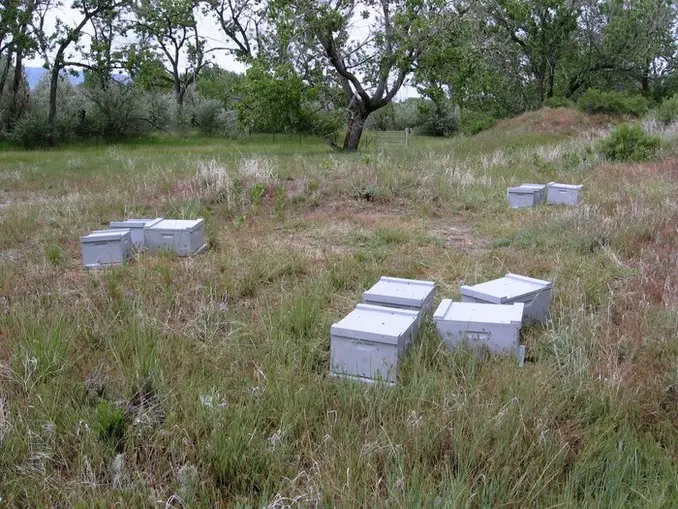Year 3 March - Still Trucking 🖊️

North Platte River at the banks top. It’s been 25 years since the river was this high and fast.
Flood Water
Hey there! So, summer’s rolling in again in Wyoming, and guess what? The North Platte River is doing its thing, running at max without causing any floods, phew!

Well, high water is reaching into the Russian Olives and taking a few of them down.

And would you believe it? The beehives are just chilling a foot or so above the high water line.
The Russian Olives getting washed out are in the back of this photo. I had this grand plan to set the hives by the Cottonwood tree, but you know what? I’m kinda glad I got lazy.
Queens
Let’s talk queens, shall we? Introducing queens is like entering a beehive rollercoaster. Every beekeeper seems to have their own secret sauce, and those methods? Well, they often do a complete 180 on each other. I’d love to see a study on the different queen introduction methods.
So, the first thing I do is go queen hunting. Eggs are my telltale sign that a queen is on the scene and needs to be evicted. While on this royal scavenger hunt, I found one queen I was expecting and two surprise guests.
Next up, queen cages get their attendants removed. And how do I do that? Easy! I use an extra veil as a wire muff. Resourcefulness is the name of the game.
The new queen and her entourage go into the hive. I turn the cage sideways for a bit of drama, giving the hive bees maximum exposure to their new queen. If there are queen cells hanging around, I’ll smear some beeswax and royal jelly on the cage. And just for a little extra flair, I embed one side of the cage right in the center of the broodnest.
After that, I close up the hive, and it’s hands-off for at least a week. And if I need to check on them after that, it’s a low-key visit, no smoke signals necessary.
Zia Queens
Good news – the Zia queens made it in one piece and are now living the hive life. It’s been a hot minute since I bought queens, and trust me, I always do it with a bit of nerves. Usually, I lose as much as I gain, but this time feels different.
Why? Well, I could have raised cells from the surviving hives, but they were a bit too buzzy for my liking. Plus, they were getting all sensitive to odors and playing the follower card – classic Russian bee traits from their Russian/Weaver/Harbo lineage. I’m curious, what bees are other natural beekeepers using?
So, the game plan now is to get these little guys strong enough to weather the winter. They’ve got about three more weeks at this spot, and then off they go to the agricultural projects. With roughly three full brood cycles left before the season wraps up, they should hit their peak potential.
-Cheers, D 🐝🤠
